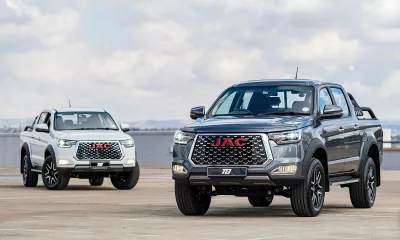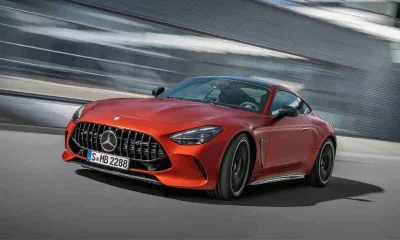By launching a 1,4-litre turbodiesel version of its funky C2 supermini, Citroën now offers a trio C2 models, including the VTR and VTS, on the South African market.
By launching a 1,4-litre turbodiesel version of its funky C2 supermini, Citroën now offers a trio C2 models, including the VTR and VTS, on the South African market.
When CAR tested the 1,4-litre petrol-engined C2 VTR model in May 2004, its 54 kW engine felt comparatively underpowered. It crept from zero to 100 km/h in 14,73 seconds, before achieving a top speed of 172 km/h. By comparison, the turbocharged 50 kW 1,4-litre 8-valve powerplant in the Citroën C2 HDi is equipped with a new-generation common-rail direct injection diesel system and develops maximum torque of 150 N.m at 1 750 r/min.
Citroën claims the C2 HDi will achieve a top speed of 165 km/h, but take more than a second less than its petrol-engined sibling to reach 100 km/h – 13,5 seconds. What’s more, the French manufacturer claims that the HDi will consume 3,52 litres of diesel per 100 km in the rural cycle and 5,01 litres in the urban cycle, for a combined cycle consumption figure of 4,3 litres per 100 km.
The technological advances in the C2 HDi motor include the design of the cylinder head, the common-rail high-pressure direct injection system and compact turbocharger. A single rail supplies the electronically-controlled injectors – which are positioned vertically and centrally in the combustion chamber – with diesel at a pressure of between 250 and 1 400 bar.
The new 1,4 litre HDi engine weighs 98 kg, courtesy of the pressure-cast aluminium cylinder block and cover, with cast-iron bearings and sleeves inserted during the casting process. In addition, the engine’s intake manifold, cylinder head cover, water inlet and outlet housings, and the treatment system for crankcase fumes are manufactured of composite materials.
It is also claimed to be a very quiet engine, which, Citroën says, can be attributed to the process of pilot injection – a phase during which a small quantity of diesel is fed into the combustion chamber. It is said to gradually increases the temperature in the chamber and results in smoother, more gradual combustion and a significant reduction in noise at low engine speeds.
The cylinder block has an elaborate exterior shape, made possible by pressure casting techniques. Combined with the use of precise ribbing to stiffen the lower part, it reportedly endows the HDi powerplant “with remarkable noise and vibration control”.
The C2 1,4 HDi costs R134 995, which includes a 3-year/100 000 km factory warranty. Standard equipment includes a speed limiter, instrument cluster display of selected mode and speed, power steering, height-and-reach adjustable steering wheel with remote radio controls, air conditioner and a CD player.
The list of safety equipment comprises such as the front seatbelts are fitted with pyrotechnic pretensioners, four front and side airbags, ABS, emergency braking assistance, electronic brake-force distribution and automatically-activated hazard lights.
Maintenance intervals are at every 20 000 km and air filter changes every 60 000 km. The timing belt needs to replaced at 230 000 km and there is a warranty of three years on the paintwork, a 12-year anti-corrosion warranty and road assistance package.







